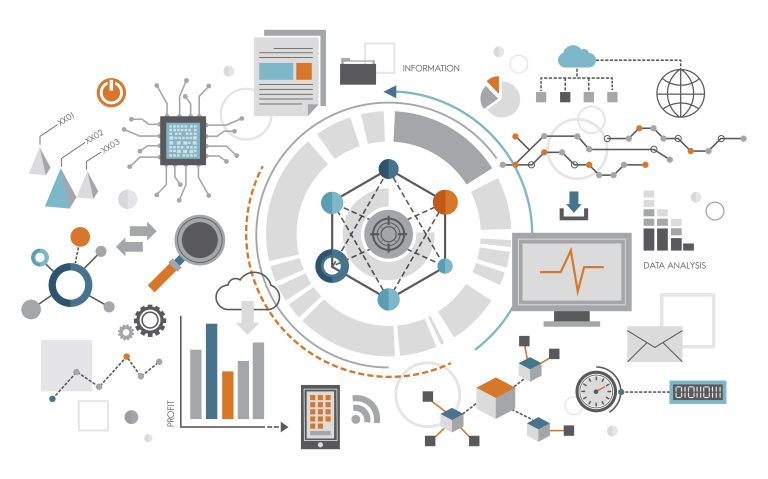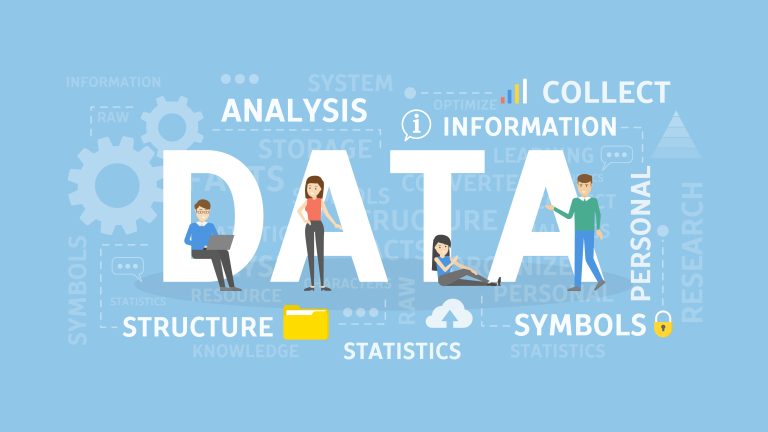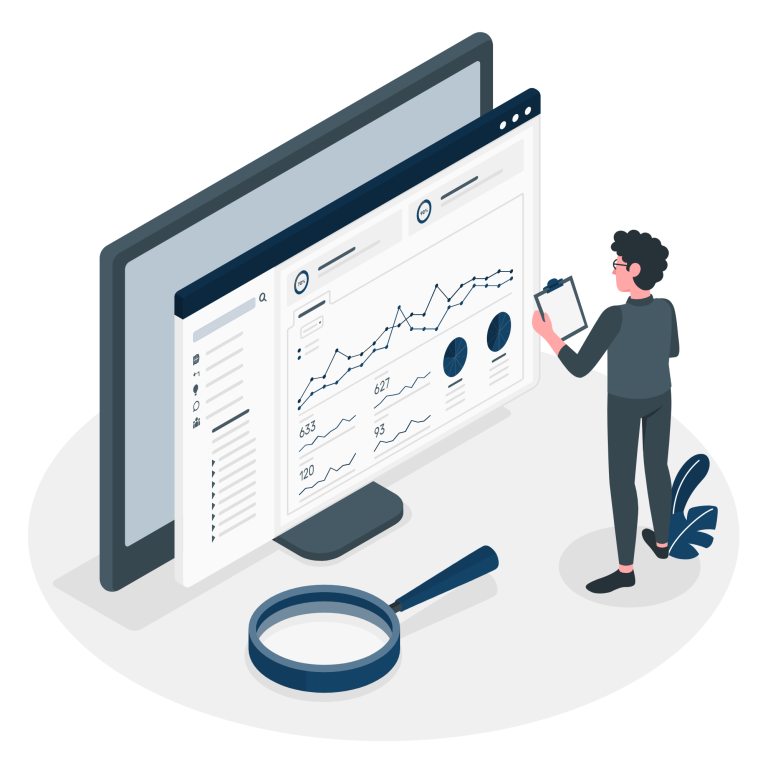Introduction
In today’s digital age, businesses are constantly seeking ways to gain a competitive edge. One of the most powerful tools at their disposal is data analytics, which plays a vital role in decision-making and provides valuable corporate insights. By harnessing the power of data science, businesses can extract meaningful information from vast amounts of data, enabling them to make informed decisions and shape their strategies effectively. In this blog, we will explore the significant influence of data analytics in decision-making and its impact on corporate insights.
1. Improved Decision-Making
- Data analytics empowers decision-makers with the ability to make informed choices based on evidence rather than intuition or guesswork. By analyzing historical and real-time data, organizations can uncover patterns, trends, and correlations that might have otherwise gone unnoticed. This enables decision-makers to gain a comprehensive understanding of the business landscape, customer behavior, market trends, and other critical factors. With this knowledge, they can make data-driven decisions that maximize efficiency, reduce risks, and optimize business outcomes.
- Data analytics can help organizations in various aspects of decision-making. For instance, in the realm of finance, data analytics can assist in financial planning and forecasting. By analyzing financial data, organizations can identify key performance indicators, track financial metrics, and make informed decisions regarding budget allocation, investments, and cost optimization. Similarly, in the field of human resources, data analytics can aid in talent acquisition, retention, and performance management. By analyzing employee data, organizations can identify top-performing individuals, assess skill gaps, and optimize recruitment strategies.
- Furthermore, data analytics is instrumental in marketing decision-making. By analyzing customer data, organizations can segment their target audience, understand their preferences, and design personalized marketing campaigns. Data analytics also helps measure the effectiveness of marketing initiatives through metrics such as conversion rates, customer acquisition costs, and return on investment (ROI). This allows organizations to refine their marketing strategies, allocate resources efficiently, and optimize marketing spend.
2. Enhanced Operational Efficiency
- Data analytics provides valuable insights into operational processes and allows businesses to identify bottlenecks, inefficiencies, and areas for improvement. By analyzing data related to supply chain management, production processes, and resource allocation, organizations can streamline their operations, reduce costs, and enhance overall efficiency.
- For example, predictive analytics can help optimize inventory management by forecasting demand patterns, minimizing stockouts, and preventing overstocking. By analyzing historical sales data, seasonality, and market trends, organizations can make accurate inventory projections, thus ensuring optimal inventory levels. This leads to reduced carrying costs, improved cash flow, and enhanced customer satisfaction.
- Data analytics also plays a crucial role in optimizing production processes. By analyzing data from production lines, organizations can identify areas of inefficiency or bottlenecks and take appropriate measures to improve productivity. Predictive maintenance analytics can also help prevent equipment failures by identifying signs of potential breakdowns in advance, thus reducing downtime and optimizing maintenance schedules.
- Moreover, data analytics enables organizations to optimize resource allocation. By analyzing data on resource utilization, organizations can identify areas of underutilization or overutilization and make data-driven decisions on reallocating resources. This ensures optimal resource allocation, reduces costs, and maximizes productivity.
3. Customer-Centric Approach
- Understanding customer preferences, needs, and behavior is essential for any business aiming to succeed in the market. Data analytics helps organizations gain actionable insights into customer segments, buying patterns, and satisfaction levels. By analyzing customer data from various touchpoints such as sales transactions, social media interactions, and customer feedback, businesses can personalize their marketing strategies, improve customer experiences, and tailor their products or services to better meet customer demands.
- Through data analytics, businesses can create detailed customer profiles and personas. By analyzing demographic information, purchase history, and behavioral data, organizations can identify trends and patterns within customer segments. This allows businesses to personalize marketing messages, create targeted campaigns, and deliver relevant offers to specific customer groups. The result is improved customer engagement, increased conversion rates, and enhanced customer loyalty.
- Data analytics also enables organizations to measure customer satisfaction and sentiment. By analyzing customer feedback, reviews, and social media interactions, businesses can gain insights into customer sentiment towards their brand, products, or services. This information can be used to identify areas for improvement, address customer pain points, and enhance overall customer satisfaction.
- Additionally, data analytics helps organizations in customer retention efforts. By analyzing customer churn data, businesses can identify factors leading to customer attrition and take proactive measures to prevent it. By implementing customer retention strategies based on data-driven insights, organizations can reduce customer churn, increase customer lifetime value, and foster long-term customer relationships.
4. Competitive Advantage
- In today’s fiercely competitive business landscape, gaining a competitive edge is crucial. Data analytics can provide organizations with a significant advantage by uncovering market trends, competitor strategies, and emerging opportunities. By leveraging data analytics tools and techniques, businesses can proactively identify market gaps, adapt their offerings, and stay ahead of the competition.
- One way data analytics contributes to gaining a competitive advantage is through market trend analysis. By analyzing industry data, market research reports, and consumer insights, organizations can identify emerging trends, market shifts, and changes in consumer preferences. This enables businesses to anticipate and capitalize on new opportunities, develop innovative products or services, and position themselves strategically in the market.
- Competitor analysis is another area where data analytics proves invaluable. By analyzing competitor data, such as pricing strategies, product offerings, and customer reviews, organizations can gain insights into their competitors’ strengths and weaknesses. This information can be used to develop strategies that differentiate the business and create a unique value proposition. Data analytics also helps monitor competitor activities, enabling organizations to respond quickly to competitive threats and adapt their strategies accordingly.
- Furthermore, data analytics enables organizations to conduct predictive modeling and forecasting. By analyzing historical data and market trends, businesses can make accurate predictions about future market conditions, customer behavior, and demand patterns. This allows organizations to make proactive decisions, such as adjusting pricing strategies, optimizing inventory levels, or launching new products at the right time. By leveraging data analytics, businesses can stay agile, respond swiftly to market dynamics, and gain a competitive edge.
5. Risk Mitigation
- Every business faces a certain degree of risk. Data analytics can play a pivotal role in risk mitigation by identifying potential risks and providing early warnings. By analyzing historical data and market trends, organizations can identify patterns that indicate potential risks or threats. This allows decision-makers to take proactive measures to mitigate risks, develop contingency plans, and make well-informed decisions that minimize potential losses.
- One area where data analytics is particularly impactful in risk mitigation is fraud detection. By analyzing transactional data, organizations can identify anomalous patterns or suspicious activities that may indicate fraudulent behavior. This allows businesses to implement fraud prevention measures, such as real-time transaction monitoring, anomaly detection algorithms, and predictive modeling. Data analytics helps minimize financial losses, protect customer data, and safeguard the reputation of the business.
- Data analytics is also valuable in risk assessment and compliance. By analyzing data related to regulatory requirements, organizations can ensure compliance with laws and regulations, minimizing legal risks and potential penalties. Data analytics can help identify gaps in compliance, monitor adherence to policies and procedures, and generate audit trails for regulatory purposes.
- Moreover, data analytics aids in risk assessment and management. By analyzing historical data, organizations can identify risk factors, assess the likelihood of potential risks, and evaluate their potential impact. This enables businesses to prioritize risks, allocate resources effectively, and develop risk mitigation strategies. By using data analytics to inform risk management decisions, organizations can enhance their resilience and navigate uncertainties more effectively.
6. Innovation and Future Growth
- Data analytics is a catalyst for innovation and future growth. By analyzing customer feedback, market trends, and emerging technologies, organizations can identify new opportunities for product or service innovation. Data-driven insights also enable businesses to monitor the success of their innovation initiatives and make necessary adjustments in real time.
- Through data analytics, organizations can gain insights into customer needs and preferences that can inform the development of new products or services. By analyzing customer feedback, businesses can identify unmet needs, pain points, and areas where existing offerings can be improved. This customer-centric approach to innovation increases the chances of success in the market and fosters customer loyalty.
- Data analytics also enables organizations to monitor the performance of their innovation initiatives. By tracking key performance indicators (KPIs) and analyzing market feedback, organizations can evaluate the success of new products or services. This information allows businesses to make data-driven decisions regarding scaling, further development, or pivoting. By leveraging data analytics, organizations can reduce the risks associated with innovation and increase the return on investment (ROI) of their innovation efforts.
- Furthermore, data analytics helps organizations identify untapped markets and expansion opportunities. By analyzing market data and customer insights, businesses can identify new customer segments, geographical areas, or industry verticals to target. This allows organizations to expand their customer base, diversify their revenue streams, and fuel sustainable growth. Data analytics also aids in market entry strategies by providing insights into market demand, competition, and customer preferences.
Conclusion:
Data analytics has become an indispensable tool for businesses seeking to thrive in today’s data-driven world. By leveraging the power of data science, organizations can make informed decisions, enhance operational efficiency, adopt a customer-centric approach, gain a competitive advantage, mitigate risks, and drive innovation. The influence of data analytics on decision-making and corporate insights cannot be understated. Embracing data analytics is no longer an option but a necessity for businesses looking to unlock their full potential and thrive in the digital age. Through data analytics, businesses can gain a comprehensive understanding of their operations, customers, markets, and competition, empowering them to make informed decisions and stay ahead in the dynamic business landscape.




